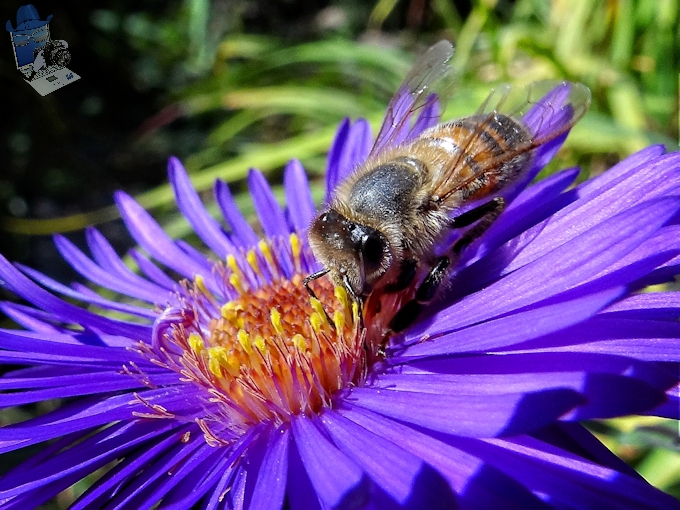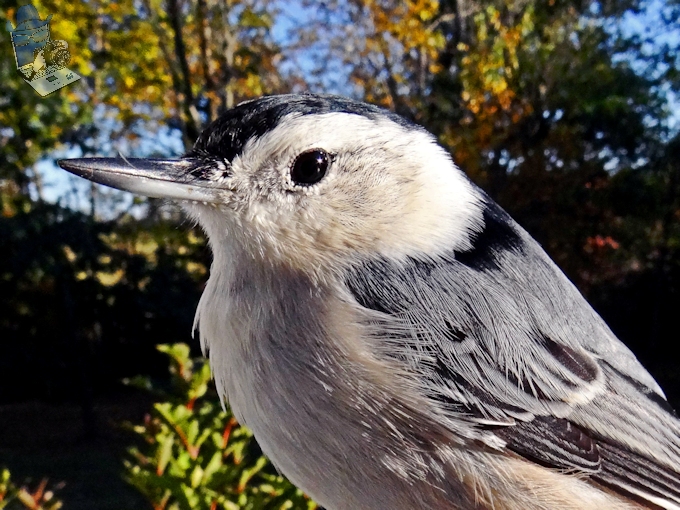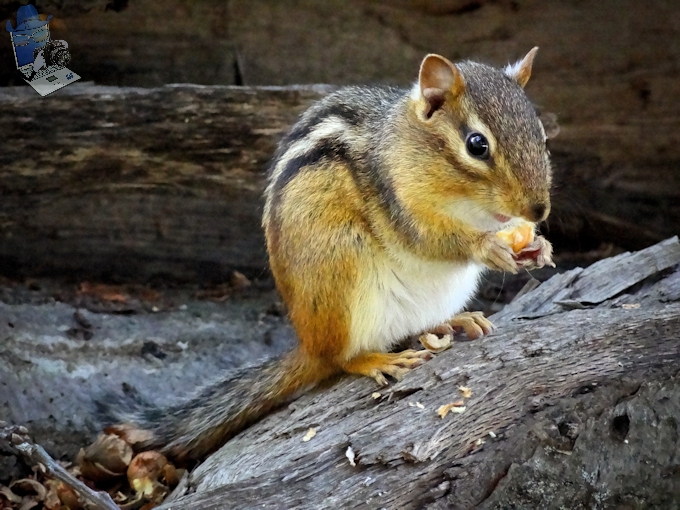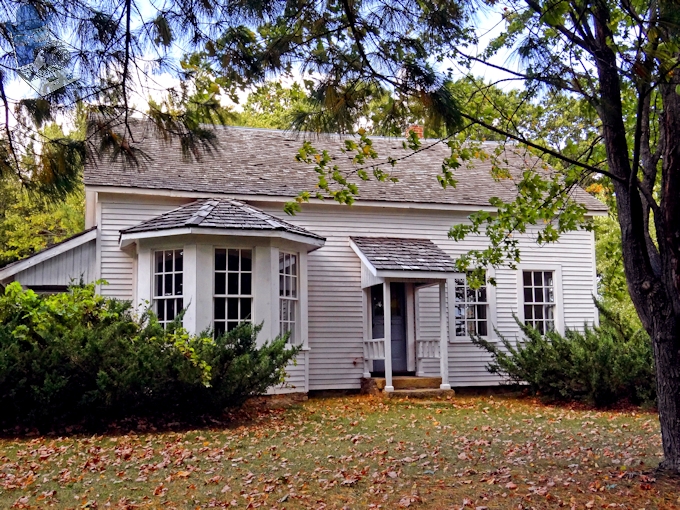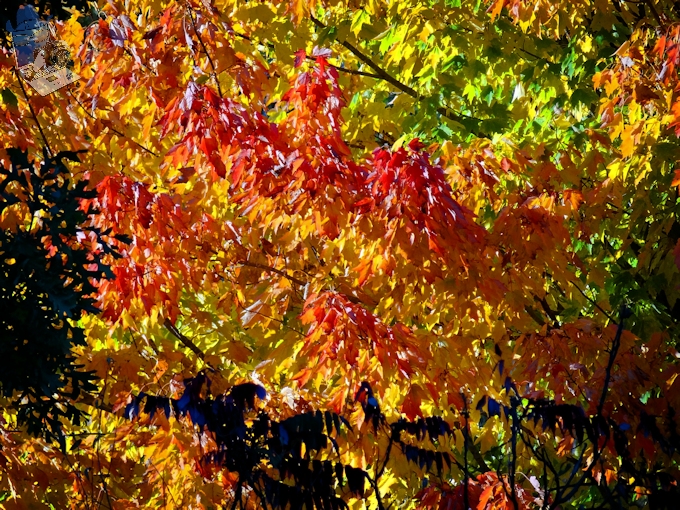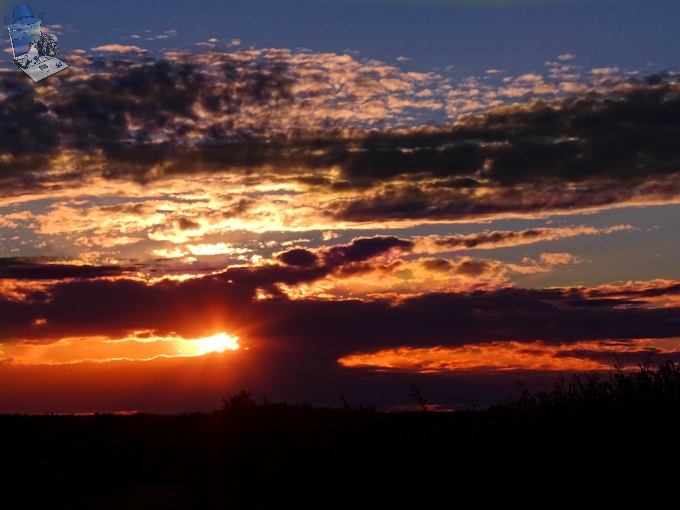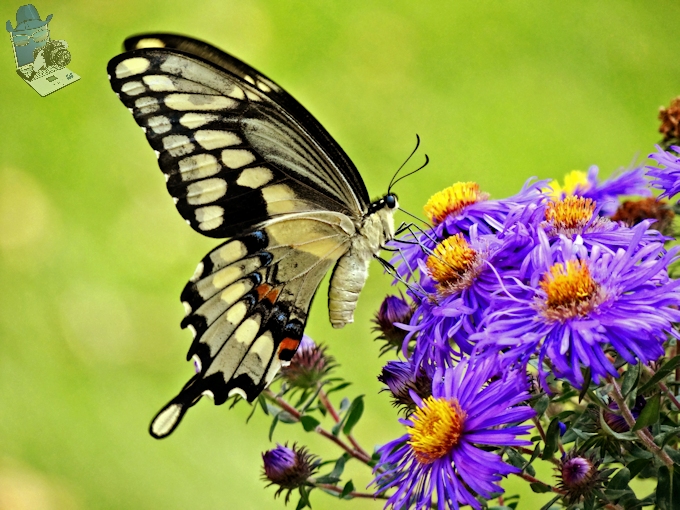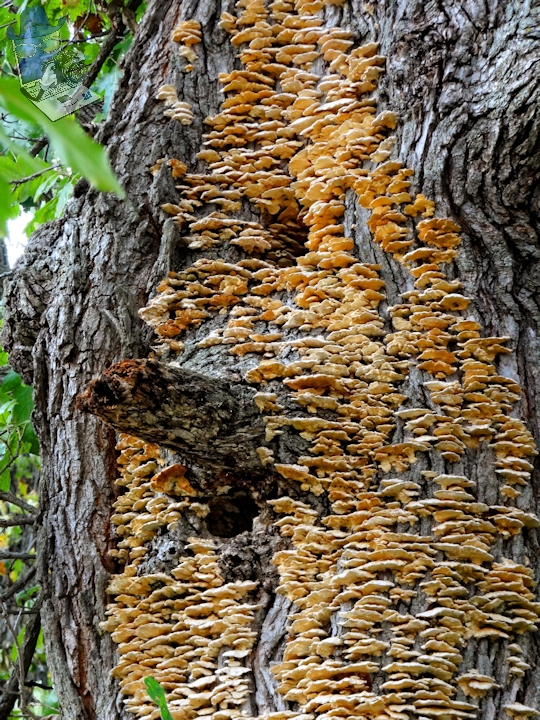The honey bees should be out in full force today collecting pollen for winter storage, once the temperature warms up some more. In cold climates honey bees stop flying when the temperature drops below about 50 °F and crowd into the central area of the hive to form a “winter cluster”. The worker bees huddle around the queen bee at the center of the cluster, shivering in order to keep the center between 81 °F at the start of winter during the broodless period and 93 °F once the queen resumes laying. The worker bees rotate through the cluster from the outside to the inside so that no bee gets too cold. The outside edges of the cluster stay at about 46–48 °F. The colder the weather is outside, the more compact the cluster becomes. During winter, they consume their stored honey to produce body heat. The amount of honey consumed during the winter is a function of winter length and severity but ranges in temperate climates from 30 to 100 lbs and maybe more for here since it can get rather cold in January.
I don’t know how big the hive is that I have in an old oak tree since the bear wasn’t able to rip the tree open but left plenty of claw marks in his attempt. There has been a steady traffic in and out of the tree when I watch but there is one less worker bee since when it was getting a drink of water at the pond, a frog ate it, although it took two tries so the frog might have got stung on the tongue!
Honey Bee at Work


